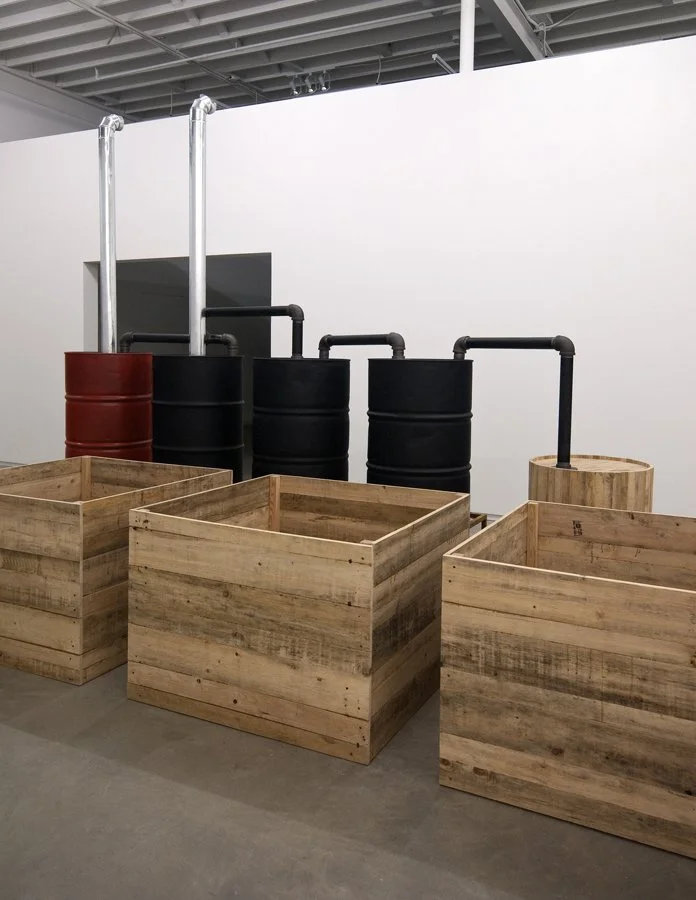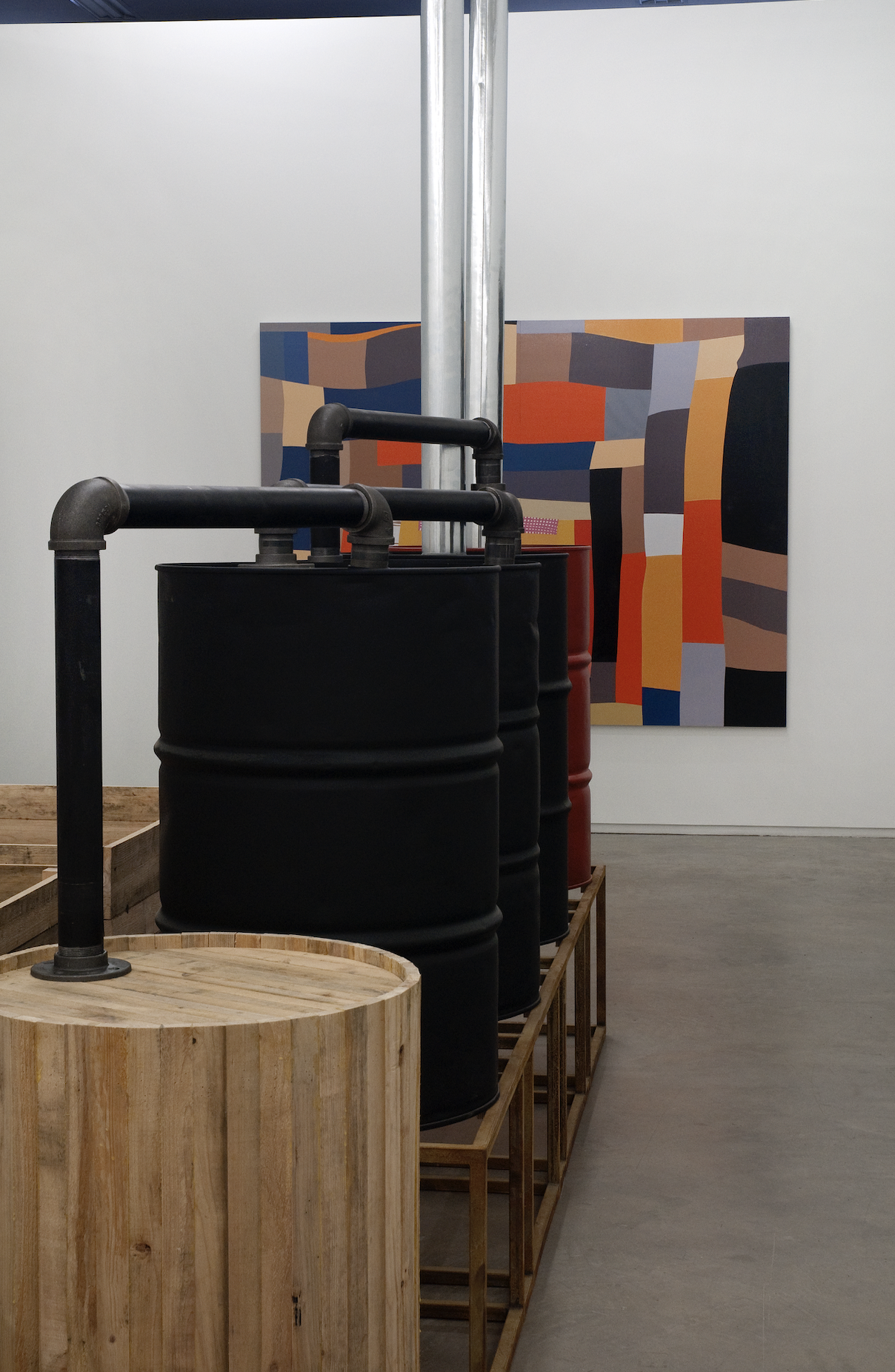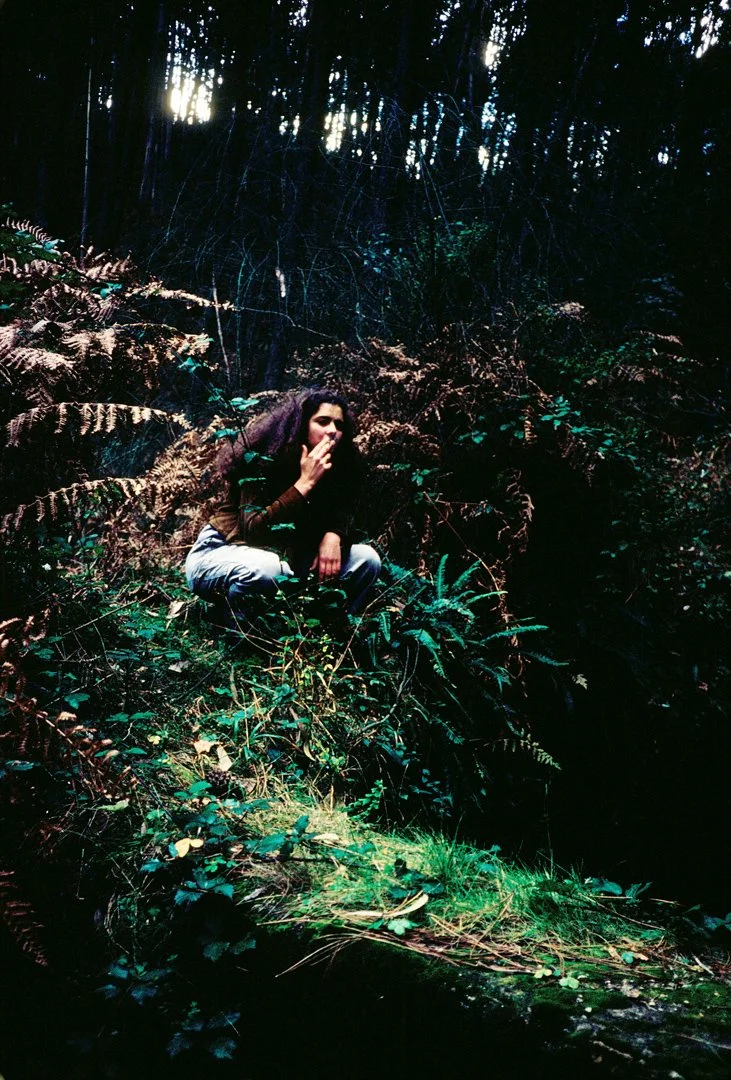GOLD
2009, VANCOUVER, CANADA
Expanding on recent work exhibited in the Nomads exhibition at the National Gallery of Canada which addressed the “drunk narrative”, MacLeod has created a giant moonshine still re-imagined as a series of rustic minimalist cubes and painted barrels. Everything seems empty without you (2009) is based on images from MacLeod’s extensive collection of postcards from the 1950s and 60s—a continued exploration of what has been called her satirical “monument to alcoholism”.
MacLeod’s minimalist construction addresses a history of shifts in societal stances on alcoholism over the last century and specifically the rise of the elevated personae of the rebellious masculine drunk figure in the 1950s.
Speaking to the relationship between modernism and alcoholism in terms of gender roles, MacLeod also probes the writing of art history in terms of memory, or the loss of a recovery narrative, so often induced from over-drinking. Jostling art history from a fixed, to a fluid state, MacLeod’s sculpture is indicative of her enduring interests in art as cultural tradition, art’s social and personal relevance, as well as the relationship between art and commerce.
MacLeod has also produced a series of seven new paintings which reclaim mythological traditions of iconic Amish hex signs, typically painted on the barns of Pennsylvania Dutch communities as a way of summoning the forces of good luck, fertility or love. MacLeod’s signs are painted on wood panels by a local sign painter, as if pulled from the barns themselves, self-reflexively calling attention to the exhibition conditions of contemporary art but removed from the hand of the artist herself. Referencing postwar modernism and the dominant male artists of this period, the vibrant geometric patterns suggest Sol le Witt’s wall paintings and the linear formation mimics the seriality of minimalism. At the same time, like the empty minimalist cubes of the alcohol still, the works speak to the aesthetic carryovers of the barn paintings, which now primarily exist as decoration, generations removed from their original mythological meaning.
In another major painting Ain’t nothing ever happened (2009) MacLeod reclaims folk art forms found in quilt patterns from the Southern United States. Through bold geometric modernist forms the painting contains stories steeped in decades of tradition and the collective labour of a group of women. Re-presented as both a textile wall hanging and within the context of high art, the painting evokes questions about the notion of an authentic art discourse.
Playing off the idea of an artist’s greatest hits, or the Gold album, MacLeod has also included an early photograph from 1981 in this body of work, showing an image of a lone female figure smoking in the wilderness within a heavy gilded wood frame. Using the formal device of the portrait photograph and referencing traditions of the pastoral landscape, this work is framed once more by a dark forest green wall, as if a reminder of the constant process of “framing” and a means for collapsing distinctions between art work and exhibition space.
Source: Robin Laurence, The Georgia Straight
Photos: SITE Photography












